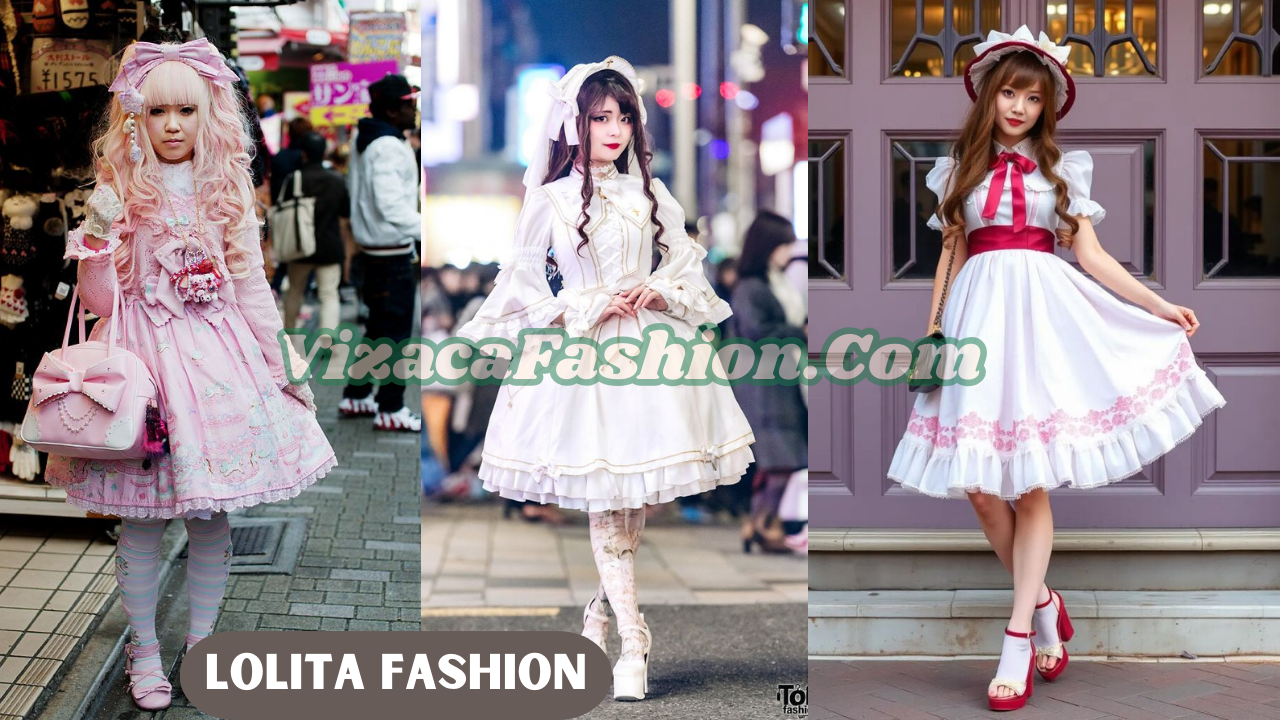Lolita fashion, ??, is a distinct and captivating subculture of Japanese streetwear that has gained global recognition for its charming and whimsical style. With its intricate designs, elegant aesthetics, and historical inspirations, Lolita fashion embodies a lifestyle that goes beyond clothing, offering a world of creativity and self-expression. This article delves into the origins, key elements, substyles, and cultural significance of Lolita fashion, ??, to provide a comprehensive understanding of this remarkable fashion movement.
The Origins of Lolita Fashion
Lolita fashion emerged in Japan during the 1980s and 1990s, drawing inspiration from Victorian and Rococo-era clothing. The style gained traction through magazines like Gothic & Lolita Bible, which showcased elaborate dresses, lace details, and accessories reminiscent of historical aristocratic fashion. As a reaction against mainstream trends, Lolita enthusiasts embraced modesty and elegance, blending historical aesthetics with modern creativity.
The term “Lolita” in this context is not connected to the controversial literary work but rather represents innocence, grace, and beauty. The fashion movement found its roots in Harajuku, Tokyo, where vibrant street style and individuality flourished.
Key Elements of Lolita Fashion
At its core, Lolita fashion is characterized by specific elements that create its unique look. These include:
- Dresses and Skirts
Lolita fashion features voluminous dresses and skirts, often supported by petticoats to achieve a bell-shaped silhouette. These garments are adorned with lace, ribbons, and intricate patterns that add an air of sophistication. - Blouses
High-collared or Peter Pan-collared blouses are staple items in Lolita fashion. They are typically made of lightweight fabrics like cotton or chiffon and often include ruffles and decorative buttons. - Accessories
Accessories play a vital role in completing the Lolita aesthetic. Bonnets, headdresses, gloves, and parasols are commonly used to accentuate the look. Jewelry, such as pearl necklaces and charm bracelets, further enhances the style’s elegance. - Footwear
Lolita footwear includes Mary Jane shoes, platform heels, and Victorian-style boots. These are often paired with knee-high socks or tights, featuring bows, lace, or themed patterns. - Hair and Makeup
Hairstyles in Lolita fashion range from curly pigtails to elaborate updos, often adorned with bows or floral accessories. Makeup emphasizes a youthful and doll-like appearance, with soft blush, rosy lips, and minimal eye makeup.
Substyles of Lolita Fashion
Lolita fashion is a diverse subculture with various substyles, each offering a unique interpretation of the aesthetic. Some popular substyles include:
- Classic Lolita
This style emphasizes sophistication and subtlety, featuring muted colors, floral prints, and antique-inspired designs. Classic Lolita is perfect for those who appreciate a refined and elegant look. - Sweet Lolita
Sweet Lolita is one of the most iconic substyles, known for its pastel colors, playful prints, and abundance of bows and frills. It draws heavily on a childlike and whimsical charm. - Gothic Lolita
Gothic Lolita combines the dark and mysterious elements of gothic fashion with the traditional Lolita silhouette. Black is the dominant color, often complemented by lace, crosses, and other gothic motifs. - Punk Lolita
Punk Lolita incorporates edgy elements like plaid patterns, studs, and chains into the classic Lolita framework. It offers a rebellious twist on the traditional aesthetic. - Ouji (Prince) Style
Sometimes referred to as “boystyle,” Ouji draws inspiration from Victorian boys’ clothing. It includes tailored shorts, waistcoats, and blouses, offering a gender-neutral or masculine take on Lolita fashion.
Cultural Significance of Lolita Fashion
Lolita fashion has transcended its Japanese origins to become a global phenomenon. Enthusiasts from around the world gather at events like Lolita tea parties and conventions to celebrate their shared passion for this unique style. These gatherings foster a sense of community and allow participants to showcase their creativity.
The movement also challenges societal norms by promoting individuality and self-expression. Lolita fashion empowers wearers to embrace their interests and create their own identities, free from societal expectations. It is not merely a fashion choice but a lifestyle that encourages confidence and artistry.
Lolita Fashion in Popular Media
The influence of Lolita fashion can be seen in various forms of media, including anime, music, and literature. Characters in anime often wear Lolita-inspired outfits, contributing to the style’s popularity among fans. Musicians like Kyary Pamyu Pamyu and bands like Malice Mizer have incorporated Lolita elements into their stage personas, further promoting the aesthetic.
How to Get Started with Lolita Fashion
For those new to Lolita fashion, starting can be both exciting and overwhelming. Here are some tips to ease into the style:
- Research Substyles: Explore the different substyles to find one that resonates with your personality and preferences.
- Start with Basics: Invest in a high-quality dress or skirt, and build your wardrobe gradually. Focus on versatile pieces that can be styled in multiple ways.
- Join Communities: Connect with Lolita fashion communities online or locally to learn more and gain inspiration from experienced members.
- Practice Coordination: Experiment with accessories, hairstyles, and makeup to create cohesive and polished looks.
FAQs About Lolita Fashion
1. What is Lolita fashion, ??
Lolita fashion is a Japanese subculture characterized by its historical inspirations, elegant aesthetics, and unique substyles. It focuses on modesty and creativity, offering a whimsical yet sophisticated look.
2. Why is it called “Lolita fashion”?
The term “Lolita” in this context signifies innocence, beauty, and grace. It is unrelated to the literary reference and instead reflects a focus on refined and modest fashion.
3. How can I start wearing Lolita fashion?
Begin by researching substyles and investing in basic pieces like dresses or skirts. Join communities to gain knowledge and inspiration, and experiment with coordination to develop your personal style.
4. Are there rules in Lolita fashion?
While there are guidelines to maintain the overall aesthetic, Lolita fashion encourages individuality and creativity. You can adapt the style to suit your preferences while staying true to its principles.
5. Is Lolita fashion expensive?
Lolita fashion can be costly due to the intricate designs and high-quality materials. However, secondhand markets and DIY options offer more affordable ways to enjoy the style.
Conclusion
Lolita fashion, ??, is more than just a clothing style—it is a celebration of artistry, individuality, and culture. Its rich history, diverse substyles, and global appeal make it a fascinating and empowering movement. Whether you are drawn to its elegance, whimsy, or creativity, Lolita fashion offers a timeless aesthetic that continues to inspire people worldwide.


